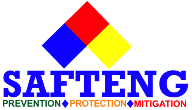Flammable Liquids emergency response procedure (PFD)
The Phoenix Fire Department has issued a nice SOP for their responses to flammable liquids. It would make a really nice start for a facility’s Emergency Response Plan where a response to a flammable liquid(s) spill/release. CLICK HERE… Membership Required You must be a member to access this content.View Membership LevelsAlready a member? Log in...
Flammable Liquids emergency response procedure (PFD) Read More »
